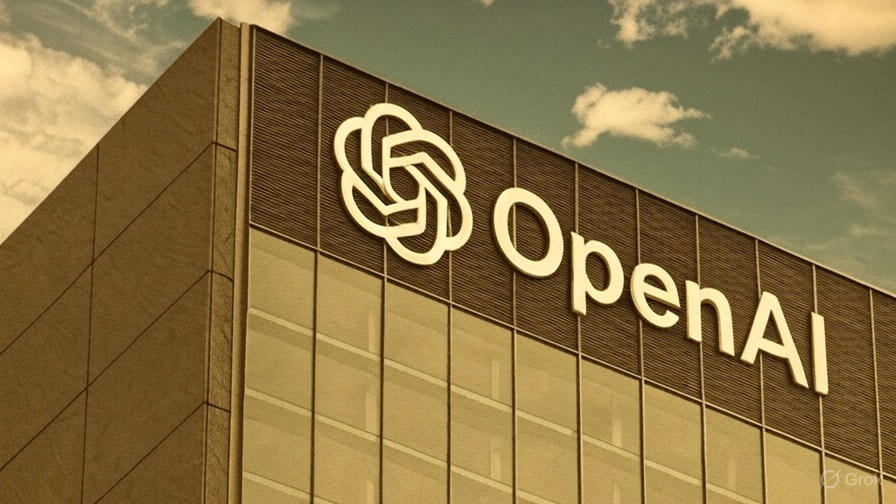OpenAI’s Ambitious AI Expansion: Power Needs Rival Major Cities
Introduction: On October 3, 2025, a viral tweet from Dexerto revealed a staggering projection: OpenAI’s future AI infrastructure may consume as much electricity as New York City and San Diego combined. Citing a Fortune article from September 24, 2025, the claim highlights OpenAI CEO Sam Altman’s plan to construct massive AI data centers in partnership with Nvidia, potentially requiring up to 17 gigawatts of power. This unprecedented scale has sparked debates over environmental, societal, and technological consequences.
Sam Altman’s OpenAI will use as much power as New York City and San Diego combined, per FORTUNE pic.twitter.com/NkblrL6Lfz
— Dexerto (@Dexerto) October 3, 2025
To contextualize, New York City’s peak summer electricity usage is about 10 gigawatts, while San Diego during its 2024 heat wave exceeded 5 gigawatts. Combining these, OpenAI’s proposed expansion could strain global energy systems. Andrew Chien, professor of computer science at the University of Chicago, called this a "seminal moment," noting that computing is transitioning from a minor energy consumer to a global power player. Projects like “Stargate” in Texas could use 20% of the state’s grid capacity, rivaling industrial and residential electricity consumption. Such expansion underscores the need to rethink how AI fits into global energy demands.
Experts warn that the environmental footprint could be substantial: Water Usage – massive cooling systems could strain local water resources; Biodiversity Impact – construction and operations could disrupt ecosystems; Electronic Waste – rapid hardware turnover may generate significant e-waste. Fengqi You, energy-systems professor at Cornell University, compared the 10-gigawatt demand to Switzerland’s peak electricity consumption, while the 17-gigawatt total equates to both Switzerland and Portugal combined.
Altman has advocated nuclear energy (fission & fusion) as a reliable solution. However, experts predict that only less than 1 gigawatt of new nuclear capacity could be operational by 2030. The likely energy mix will involve renewables (wind & solar), natural gas, and advanced energy storage systems. This gap could force AI infrastructure to rely on traditional energy sources in the near term, raising sustainability concerns.
OpenAI’s energy consumption carries significant societal implications: Cost: Each data center may cost ~$50 billion, totaling $850 billion across projects. Public Resources: Local grids and communities may face increased strain. Tech Dependence: Exponential AI usage growth (ChatGPT usage increased 10x in 18 months) highlights reliance on large-scale infrastructure. Public reaction on social media (X/Twitter) has ranged from humor to concern, with some users calling for advanced nuclear adoption and others criticizing tech giants’ green promises.
Nvidia is investing up to $100 billion to supply millions of GPUs for OpenAI’s expansion. These partnerships indicate the scale of investment needed to sustain AI growth, hinting at a potential shift in how computing power is globally distributed.
If AI consumes 10-12% of global energy by 2030, as projected, this could redefine energy planning worldwide. Countries may need to adjust grid infrastructure, invest in renewables, and reconsider energy policies to accommodate the AI revolution.
Experts stress the importance of societal oversight. Chien urges dialogue to ensure that AI growth balances innovation with sustainability, holding tech companies accountable for environmental and social responsibility.
FAQs
Q1: How much energy could OpenAI’s AI infrastructure use?
A1: Up to 17 gigawatts, equivalent to the combined peak electricity usage of New York City and San Diego.
Q2: Why is this a concern?
A2: Such high energy demands could strain local grids, increase environmental impact, and challenge sustainability goals.
Q3: Can nuclear power solve this problem?
A3: While nuclear is ideal for reliable energy, short-term feasibility is limited. Renewables and natural gas will likely supplement energy needs.
Q4: How much will these projects cost?
A4: Each site may cost $50 billion, totaling approximately $850 billion globally.
Q5: What are the societal implications?
A5: Public resources may be stressed, and there are concerns over climate impact, water usage, and e-waste.
Conclusion: OpenAI’s AI expansion represents a paradigm shift in computing and energy consumption. While it promises technological breakthroughs, it also poses serious environmental, economic, and societal challenges. Balancing innovation with planetary responsibility is no longer optional—it’s essential. As the world watches OpenAI’s ambitious plans unfold, the question remains: Can AI progress coexist with sustainable energy practices, or will it demand a radical restructuring of global energy systems? This moment calls for intellectual reflection, informed policy decisions, and public engagement, ensuring that the pursuit of AI excellence does not overshadow the planet’s long-term well-being.


0 comments